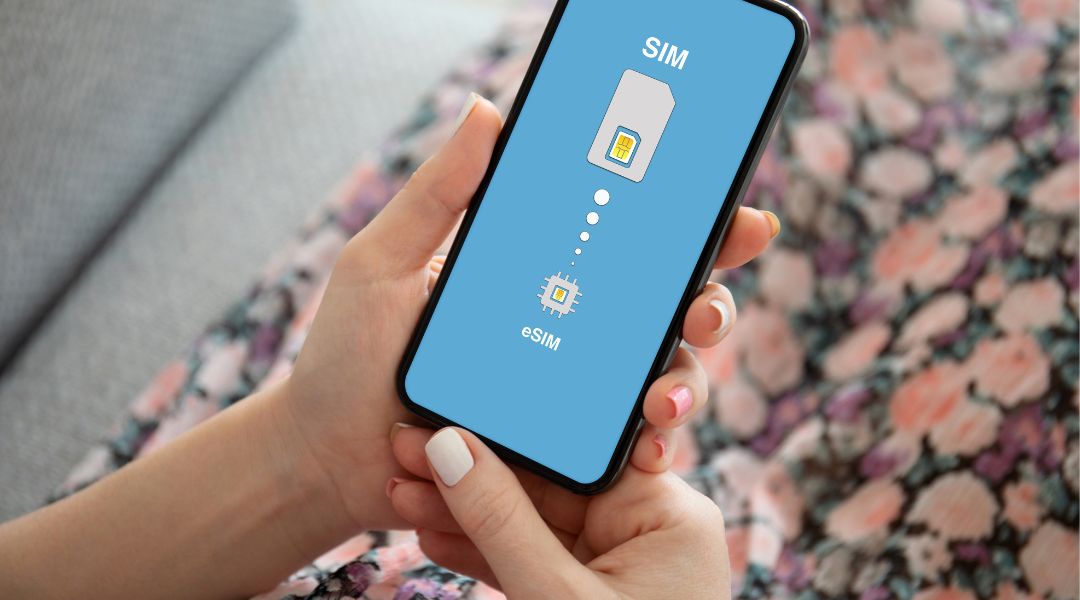As embedded SIMs (eSIMs) gain acceptance all over the world, the classic SIM card era may be coming to an end.
Since its creation in 1991, the Subscriber Identity Module (SIM) has been playing an undeniable role in the journey of mobile telephony. There are more SIM cards in use than human beings on the planet now. These are, however, starting to feel a little stale with technology becoming smaller and more functional.
Besides difficulties in switching service providers, plastic SIMs leave behind carbon footprints. With the telecom industry looking to achieve net zero carbon emissions, mobile network operators are also making some significant changes to become more climate-friendly.
Therefore, it would be no surprise if SIMs cease to exist in the next five years.
THE POTENTIAL SUCCESSOR
The eSIM functionality – which allows consumers to change operators without changing numbers – will be accessible on 25-30 per cent smart-phones in India by 2023, German digital solutions company Giesecke+Devrient (G&D) has estimated.
At the moment, eSIMs are more commonly used as the second SIM in a dual-SIM handset. The adoption of eSIM technology, however, is on the rise and its uptake across a gamut of connected devices is poised to grow over the next decade, thanks to flexibility, cost efficiency and security.
It is estimated that 3.2 billion such devices will be in use by 2025 globally.
The rapid increase in the number of IoT-connected devices in consumer electronics and the application of machine-to-machine (M2M) communications is expected to create new opportunities and influence the market growth between 2022 and 2029.
A comprehensive research report by Market Research Future (MRFR) has forecast that the market size would reach USD 5.71 billion by 2030, growing at a compound annual growth rate of 31.4 per cent.
THE UNSTOPPABLE TECHNOLOGY
While the first eSIM-equipped device appeared in 2015, the technology has only hit the mainstream in the past year or two.
Smaller than a nano-SIM, these are designed to replace old-style physical SIMs and are permanently installed in the device. It cannot be removed and put on another phone. eSIM would, therefore, put an end to the drive to the carrier’s store to pick up a physical SIM or wait for one to arrive in the mail as the user will now be able to quickly digitally activate it on a provider’s network.
According to Sascha Segan, Lead Analyst, Mobile, the original drive toward eSIM came in part from the Internet of Things (IoT) industry. Being tiny, and not requiring an extra tray, it could be hardwired into devices like drones, wearables, sensors, and location trackers, where size is of the essence.
In other words, eSIM could hasten the development of IoT devices and their use cases since the technology makes it simpler to integrate cellular connectivity into a variety of gadgets, including connected household appliances, smart meters, and machinery.
The Apple Watch Series 5 and Series 4 already have eSIMs, and so do Samsung Gear S2 and Gear S3 smartwatches.
The emerging 5G technology with high internet speed and expanded network capacity is also expected to impact the eSIM market positively, increasing its adoption across several cellular-enabled devices.
THE BENEFITS
eSIM allows the user to change wireless carrier, data, or service plan through software. Since information on an eSIM is rewritable, it will become easier to change the network without removing the SIM and inserting a new one. It’s goodbye to the ‘ejector tool’ to remove the old SIM from your phone.
“Customers now have a simpler way to switch service providers thanks to eSIMs, which encourages healthy competition among providers and leads to increased network efficiency and client satisfaction,” said Luc Vidal-Madjar, head of IoT and eSIM solutions at BICS for IBTimes.
Additionally, it allows for use of several operators and different numbers on your phone with the same eSIM. One can also take advantage of the new rate by switching between different plans in an instant.
Roaming charges will also no longer be a nuisance as all one has to do is switch to a local network when abroad without needing to physically insert a SIM. Using a local mobile network while travelling will be much cheaper too. It also reduces the risk of losing a physical SIM.
So, the user can also often use two different lines- home and work line – on the same device or switch between different plans depending on where s/he is.
The freed-up space in the device can also be used to reduce its size, increase battery life, or improve other capabilities like the camera.
Counterpoint Research Analyst, Satyajit Sinha, noted, “The eSIM’s compact form factor offers significant space reduction for device manufacturers along with potentially higher security, re-programmability, and power efficiencies over the traditional SIM card solutions. For operators, eSIMs can significantly reduce the SIM distribution and activation costs while the potential to generate higher roaming revenues. Furthermore, eSIM offers great benefits for consumers and enterprise customers to seamlessly choose, activate, connect, and manage connectivity on their devices.”
It is worth mentioning here that the three leading telecom operators in India- Reliance Jio, Bharti Airtel and Vodafone Idea – offer eSIM functionality.
THE CONS
eSIMs offer enhanced security since the phone will be constantly active on the carrier’s network, hence easily traceable. While thieves are likely to find it difficult to hide the location of a stolen phone, this may be potentially problematic for the users concerned about their privacy.
So far, one could easily remove the SIM card from a phone to avoid being tracked. The inbuilt IC effectively removes this option.
The transfer of the credentials into a different device is another problem area. If a handset stops working or is destroyed, the user has to retrieve and download the eSIM profile from the cloud, which will be much trickier and more time-consuming.
Moreover, one cannot transfer eSIM profiles to another device once they have been activated. A new profile has to be ordered as and when one changes the smartwatch or smartphone. Before selling the smartphone, one also has to delete the eSIM profile.
While eSIM makes it possible to allow devices to hop carriers with ease, they themselves may not be as excited to facilitate this functionality since developing in-house eUICCs operating systems can increase the cost. Price competition among operators will also put pressure on profitability.
While disruptive for some existing business models as embracing the technology could enable a higher churn rate, the carriers cannot afford to do otherwise with eSIM adoption accelerating.


